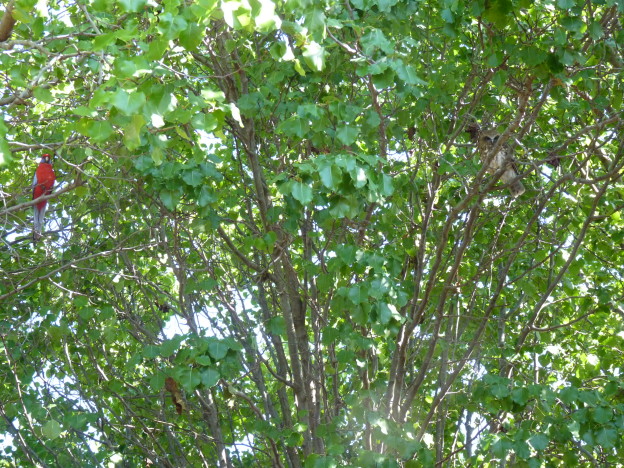I have a little book – just 10 x 13 cm – called ‘Bush Birds of Australia’ by Allen Keast. It describes 51 of our native species. Inside the front cover, is a date, ‘7-7-67’, written by me, beside which I recorded that I had seen 18 of these species. It was the beginning of my fascination with birdwatching.
I’d call myself a birdo; everywhere I’ve lived, I’ve kept lists. Back in 1967, our Beecroft home had a double block and our large, colourful garden was a mecca for birds, both native and introduced. I first saw crimson rosellas there, though mum called them mountain lowries. A more common parrot was the rainbow lorikeet, but unlike the lowries, they never landed, instead screeching overhead, top gunning through the tree tops, from roosting sites to feeding grounds.
The migratory welcome swallows were always welcome, a pair arriving each spring and building a mud nest in one of the corners of our front verandah. I assumed it was the same pair coming back each year, but only another swallow would know! I would sneak a look at the eggs and fledglings whenever an opportunity arose. After 4 years, the corners all had nests, so we had to knock them down to ensure our annual visitors kept coming. But if no corners were available, would they have just given one of the existing nests a makeover? – interesting thought! Indian (red-whiskered) bulbuls and blue wrens also nested in our yard.
Peewees and wagtails were also regular visitors, as they are now to my Canberra home, and yes, over the 2.5 years I’ve lived here, I have kept a bird list. It now tallies 83 species, which shows the wide range of habitats nearby, from a lake just 50 metres from my back gate, to a forested nature reserve about 200 metres distant. Sightings 82 and 83 deserve special mention.
Three large Manchurian pear trees dominate my front garden. They shelter the house from wind and rain, but being exotics, are rarely used by native birds. I was surprised to hear an unusual call coming from deep in the foliage on March 2 this year. It was a strong, single note, repeated every 15 seconds or so: it sounded like a warning. I was naturally intrigued, so investigated. The caller was impossible to miss: an adult crimson rosella.
But what was this lone parrot in a pear tree calling for? I followed its gaze and was amazed to find the streaky brown chest and bulbous eyes of species 82, a wide-awake boobook owl. The boobook’s ‘morepork’ call is one of the most familiar night sounds in the Australian bush, hence its popular nickname: mopoke. However, I had not heard the call since moving here, so to find the owl camped in an ornamental pear was a real treat. I decided it was probably a ‘teenager’ searching for a place to live, and had been caught short by the dawn. However, Master Mopoke was not intimidated by Mister Rosella, and stayed put till the sun had set and it was safe to decamp. It didn’t return!
On April 2, my morning dog walk reached the summit of Mount Percival, in the nearby reserve (‘Winnie’ was leashed, of course!). I had approached from the south, so to see a mob of birds I heard calling to the northeast, meant looking directly into the sun. However, in a few seconds, species 83, a young wedge-tailed eagle glided, not so gracefully, into view, while being hassled by several raucous magpies. The wedgie did not enjoy the attention, quickly ascending and leaving his victorious tormenters behind.
As with the boobook, I had not seen a wedgie since moving here, though had seen them almost daily when on the farm – with a wing span of 2.5 metres, they are hard to miss! I decided it was also a youngster looking to make its way in the world, though that world won’t include Mount Percival if the maggies have anything to do with it!
So who will species 84 be? And when will I see it? Ah, the joys of being a birdo!
Happy travelling!
